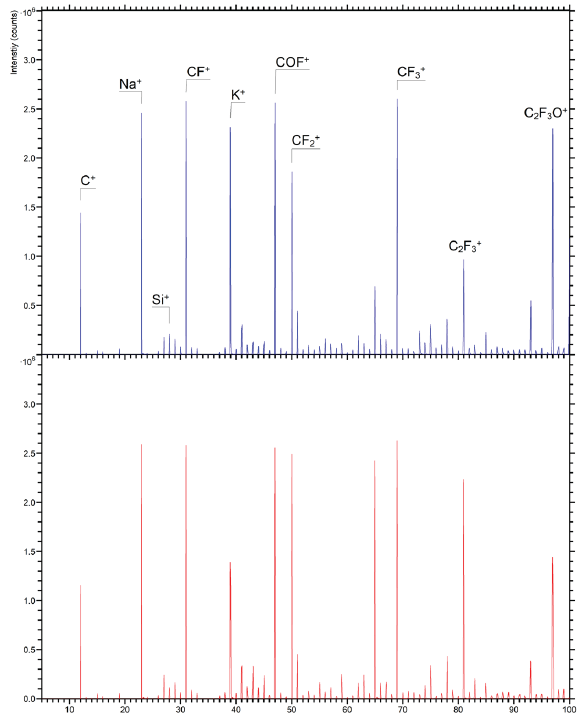Depth Profiling of Thin Organic Films
Home » Depth Profiling of Thin Organic Films
Cellphone screens are quite vulnerable to damage and are often protected with optional secondary layers. Generally, these screen protectors are glass or plastic and have a thin oleophobic coating.
The purpose of the coating is to prevent fingerprints from building up on the screens. Over time, the coating wears down and the fingers leave oil on the surface and thus the fingers do not slide as efficiently on the surface of the protector.
EXPERIMENTAL
We investigated a new as-received screen protector and compared it to one that was exposed to UV light for a week. The study was performed using Time-of-Flight Secondary Ion Mass Spectrometry (TOF-SIMS) to characterize the surface coatings on the screens and to compare the thickness of the coatings with depth profiles.
The sputter rate was determined with a known reference. The depth profiles of the organic film were carried out using argon clusters as the sputter species. This allows the profiling of the oleophobic coating (organic films) while maintaining the molecular information.
Results
The spectra from the as-received surface and the UV exposed surface were similar with no major differences as seen in Figure 1.

Would you like to learn more about Depth Profiling of Thin Organic Films?
Contact us today for your depth profiling of thin organic film needs. Please complete the form below to have an EAG expert contact you.